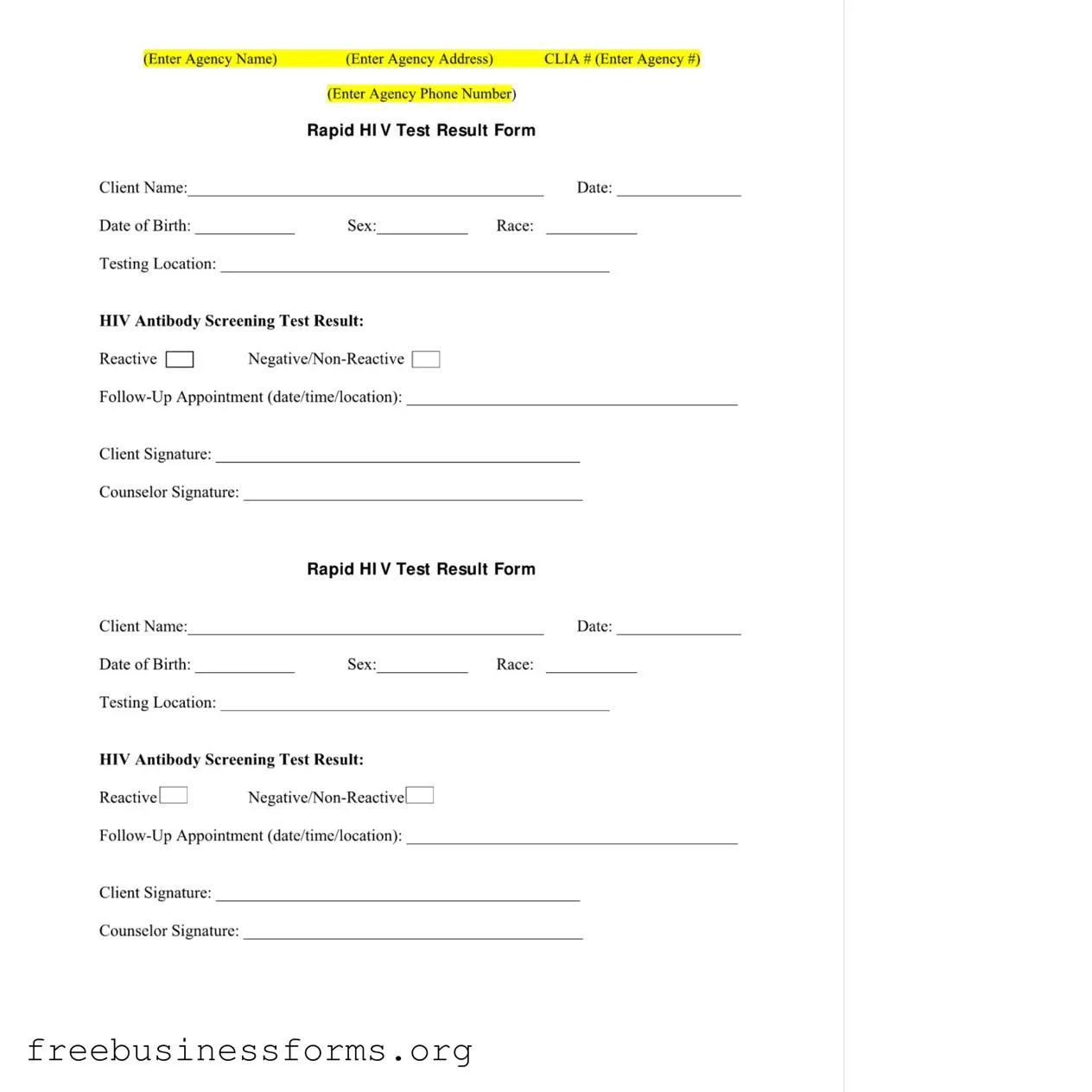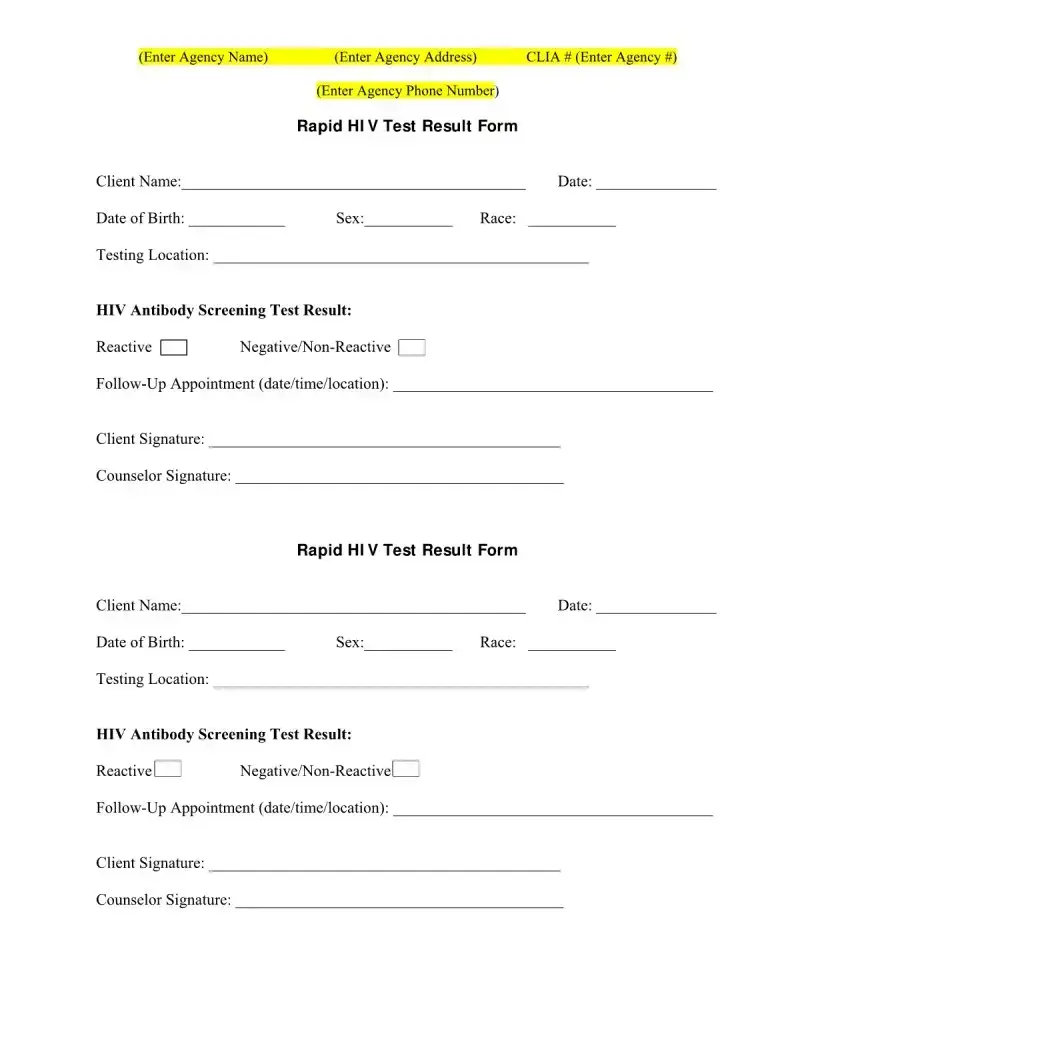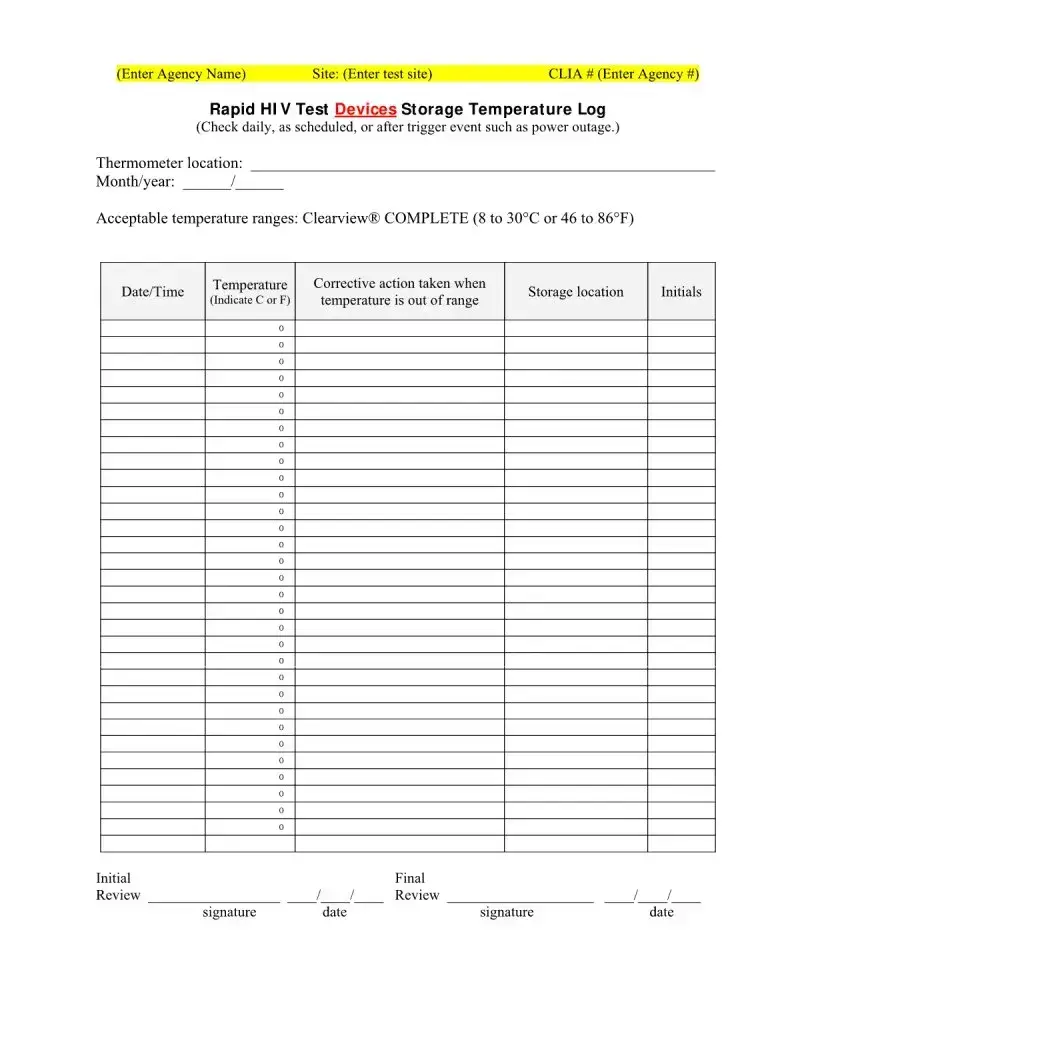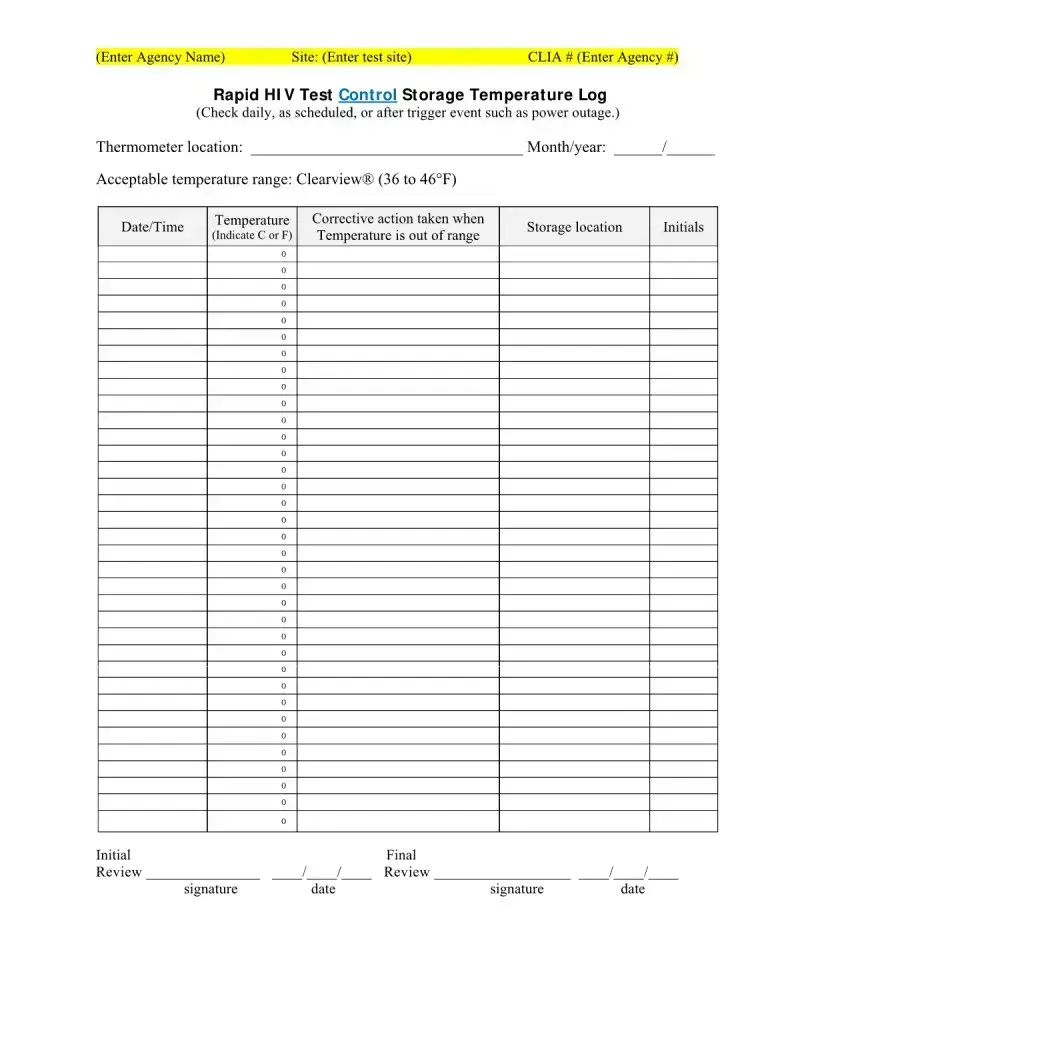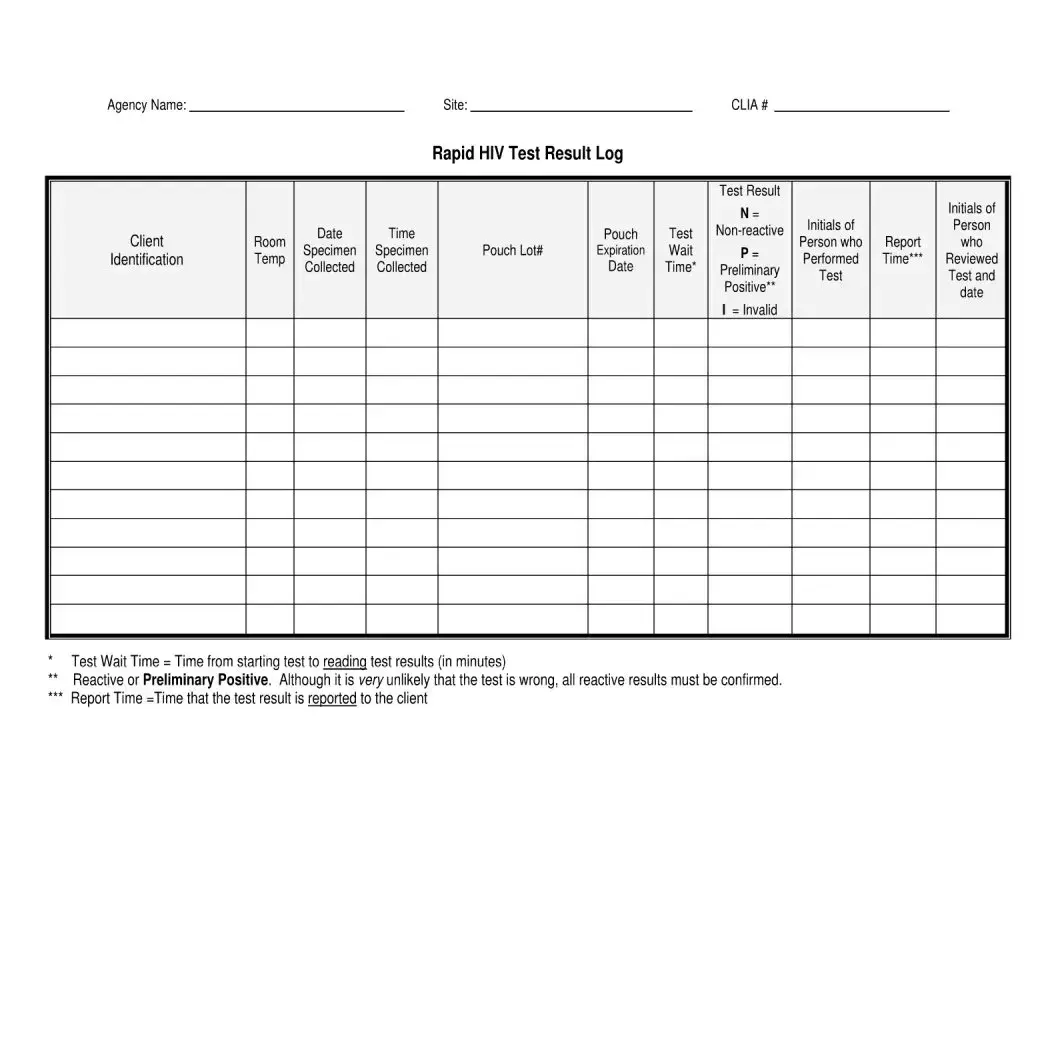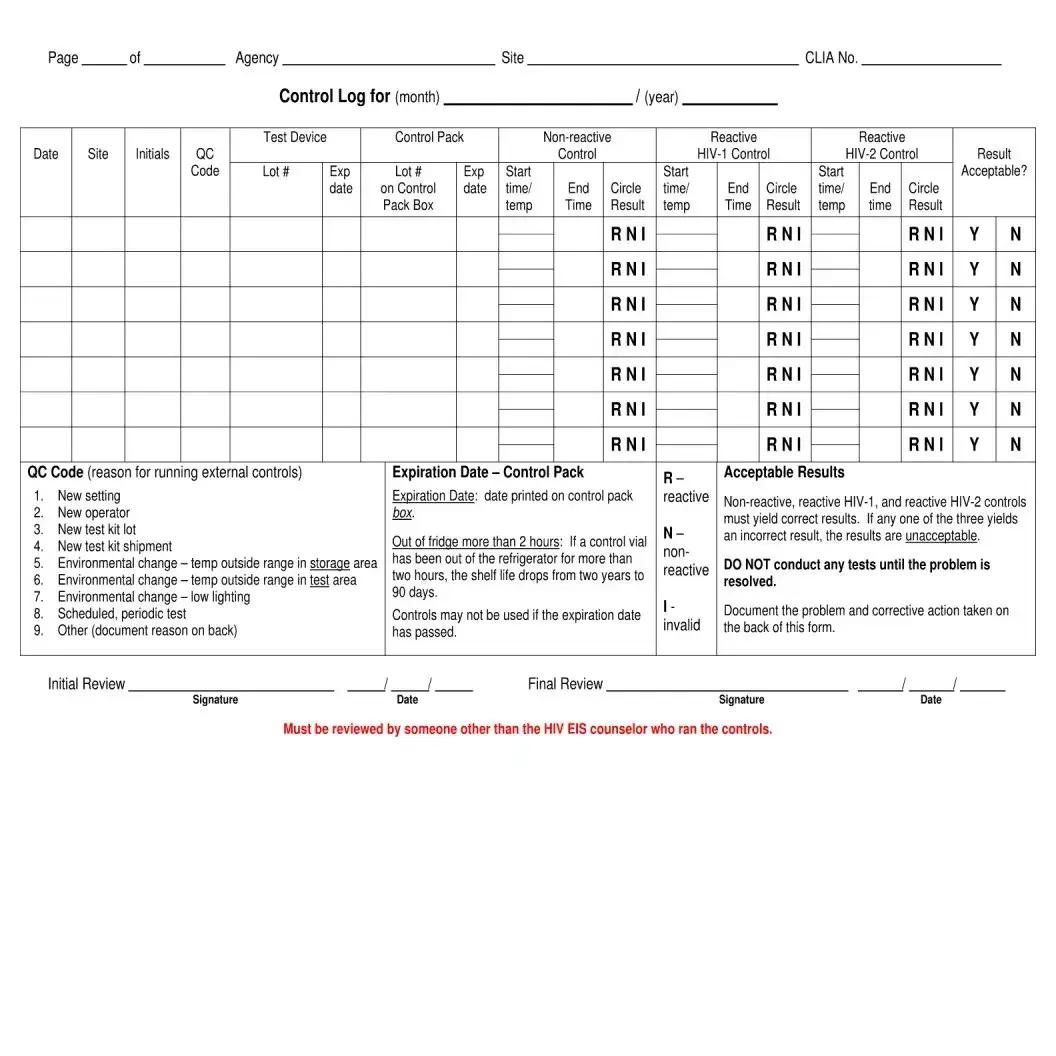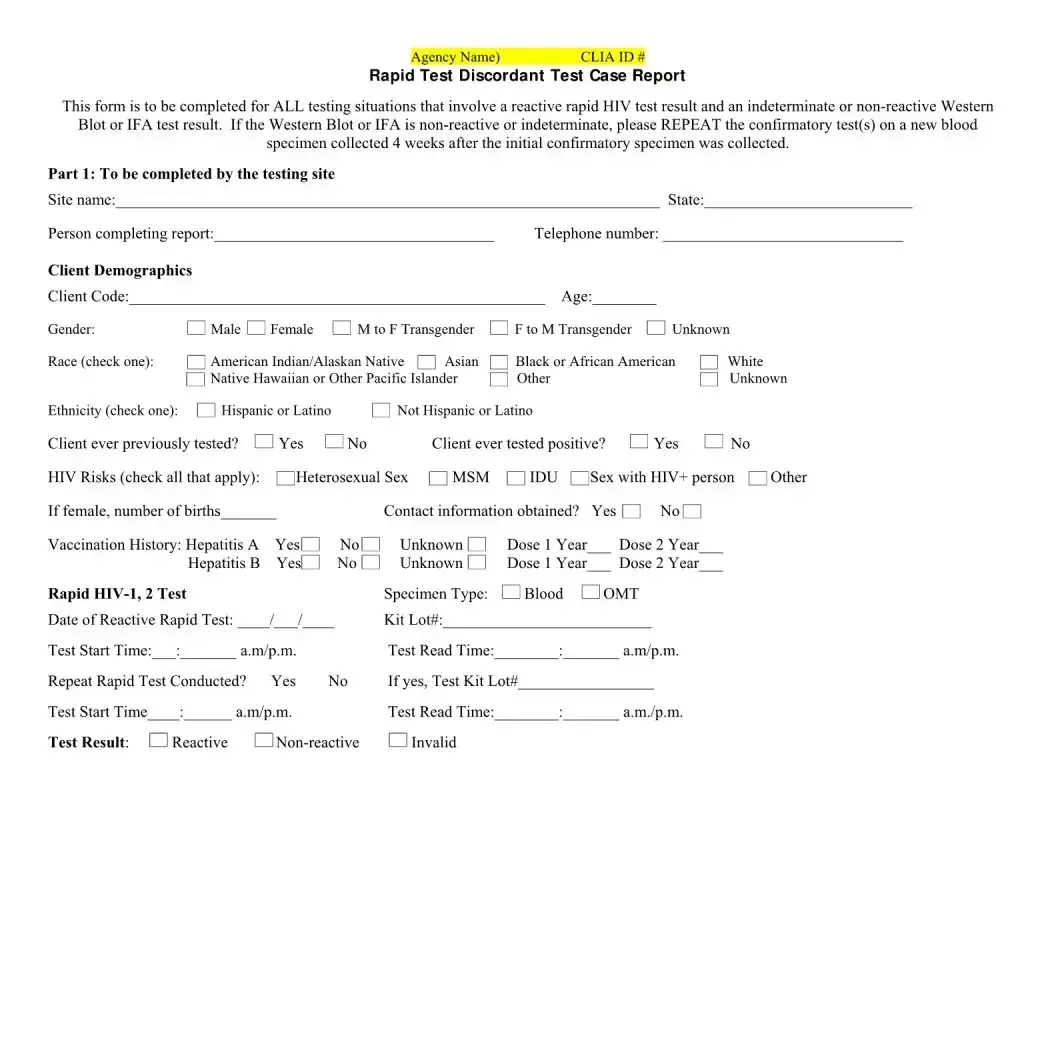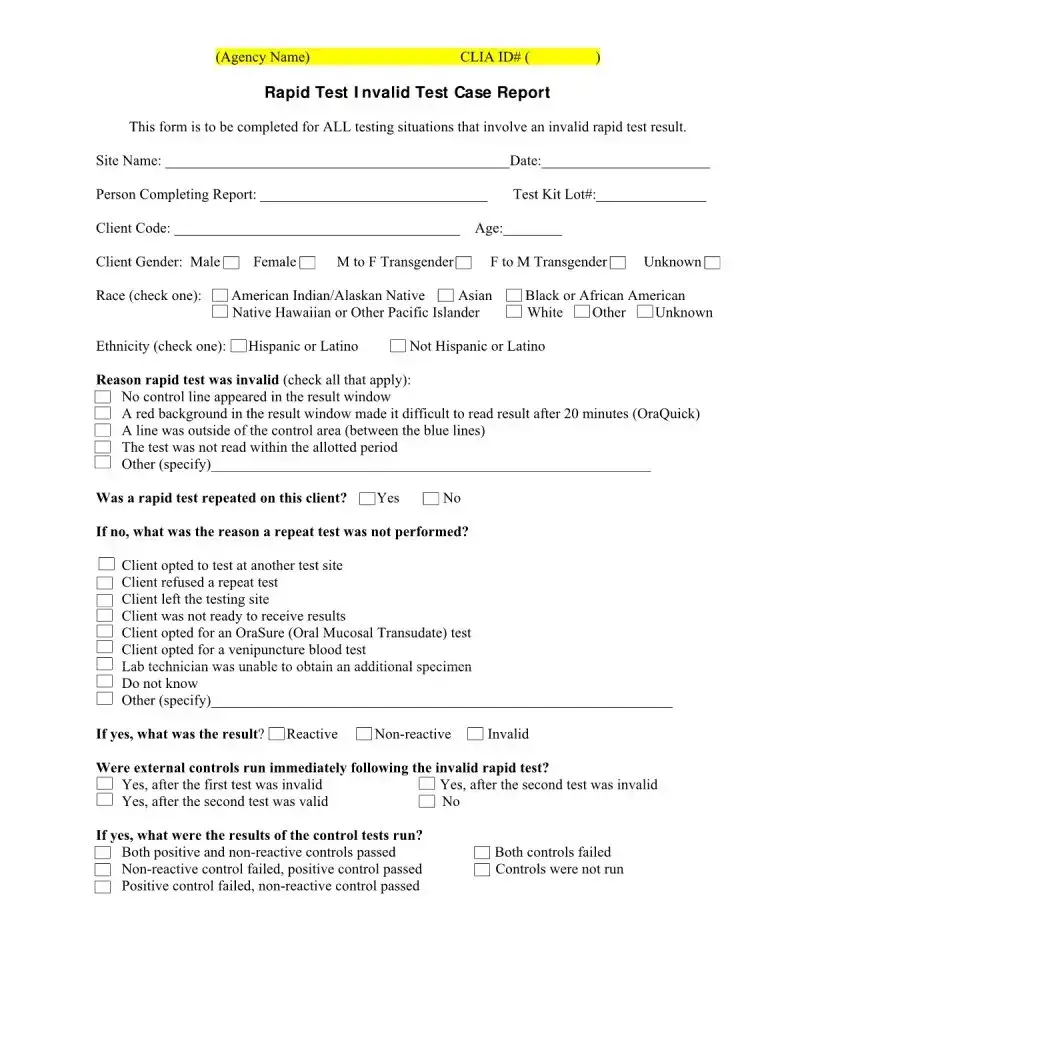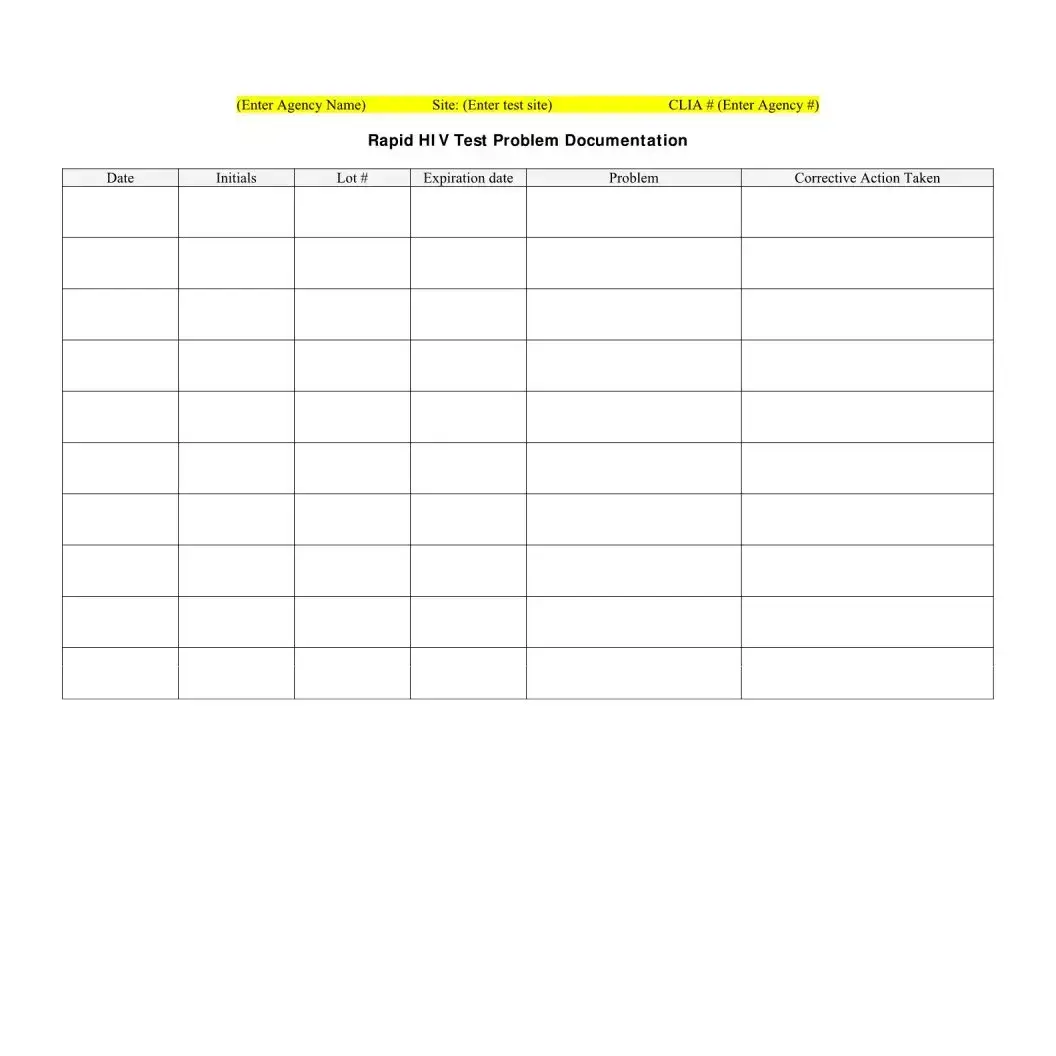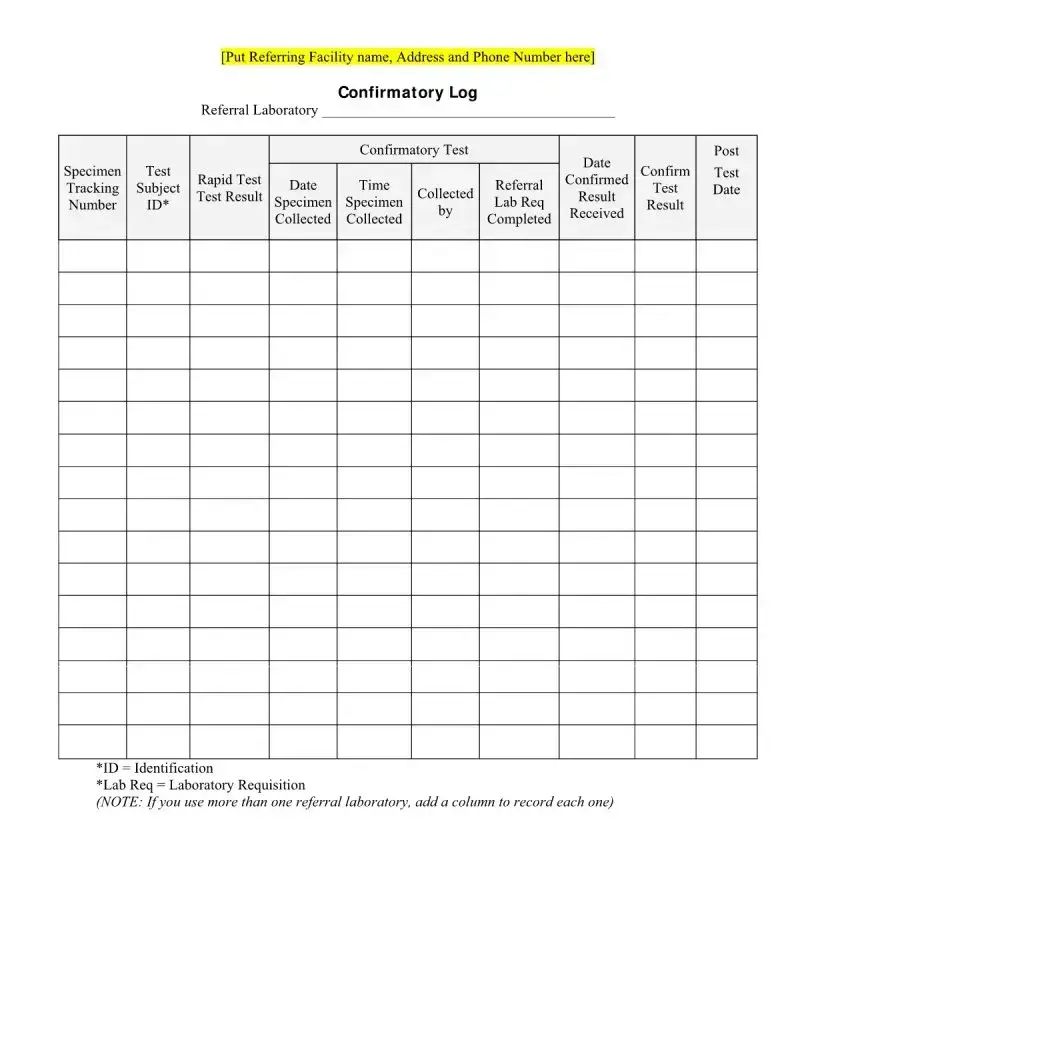The Negative HIV Test form is a vital document in the process of HIV testing, serving multiple purposes for both clients and healthcare providers. It includes essential information such as the client's name, date of birth, race, and the testing location, ensuring accurate identification and record-keeping. The form clearly indicates the result of the HIV antibody screening test, which can be either reactive or negative/non-reactive. Additionally, it provides a space for follow-up appointments, allowing clients to plan their next steps in case further testing or counseling is necessary. The form also contains sections for both client and counselor signatures, emphasizing the importance of consent and acknowledgment in the testing process. Moreover, it includes logs for monitoring the storage temperature of rapid HIV test devices and controls, which are crucial for maintaining the integrity of the tests. By documenting these temperatures, agencies ensure that tests are performed under optimal conditions, thereby enhancing the reliability of the results. Overall, the Negative HIV Test form is not just a record; it is a comprehensive tool that supports the health and well-being of individuals undergoing HIV testing.
